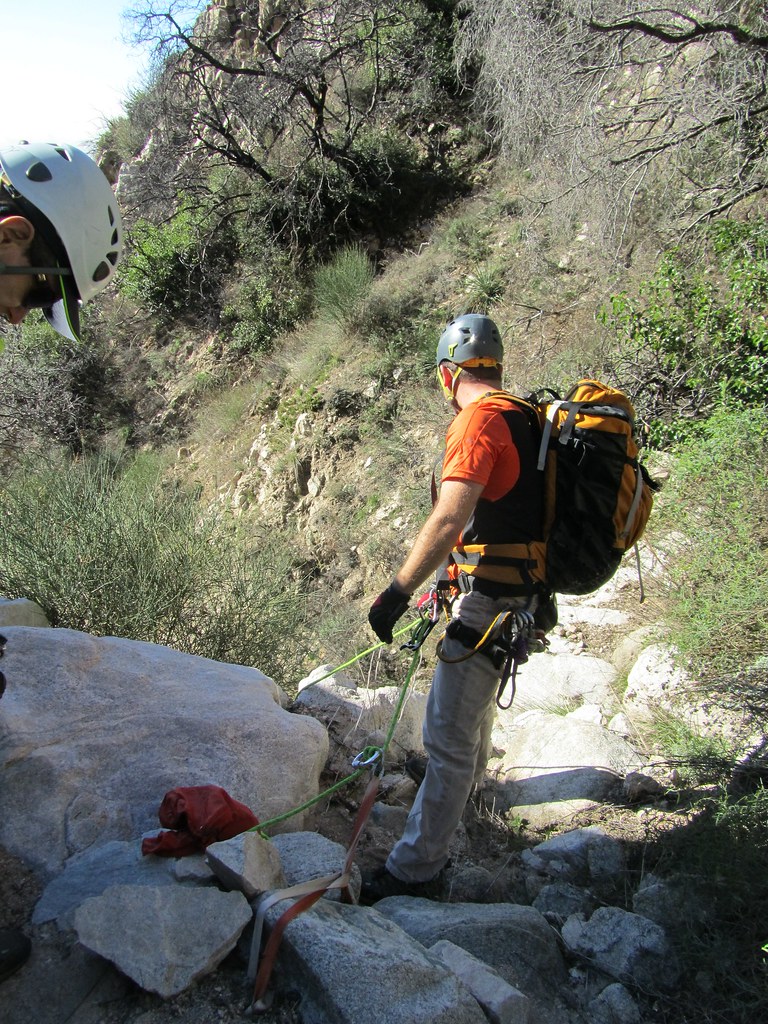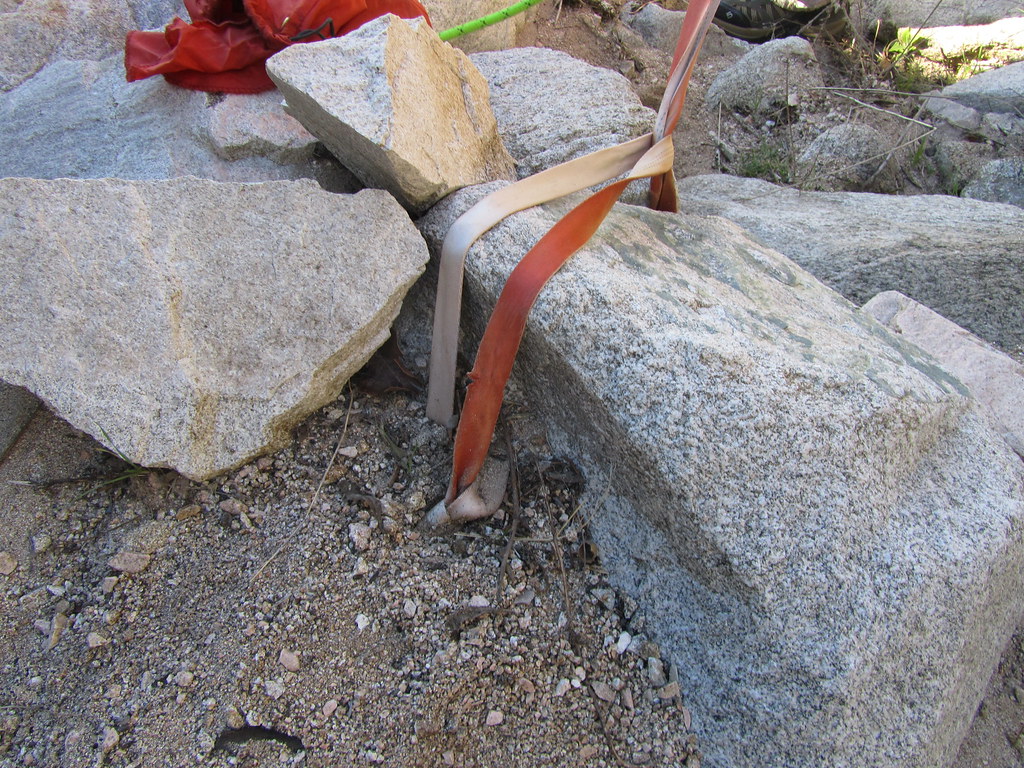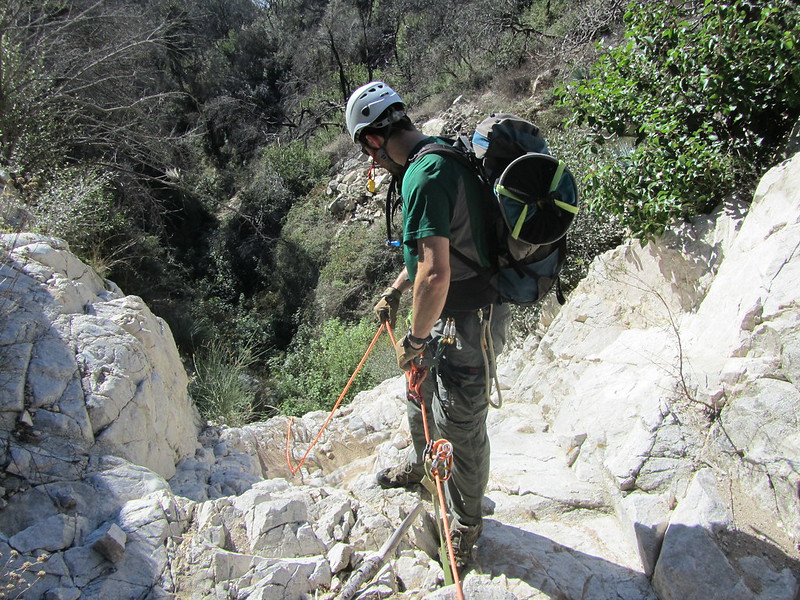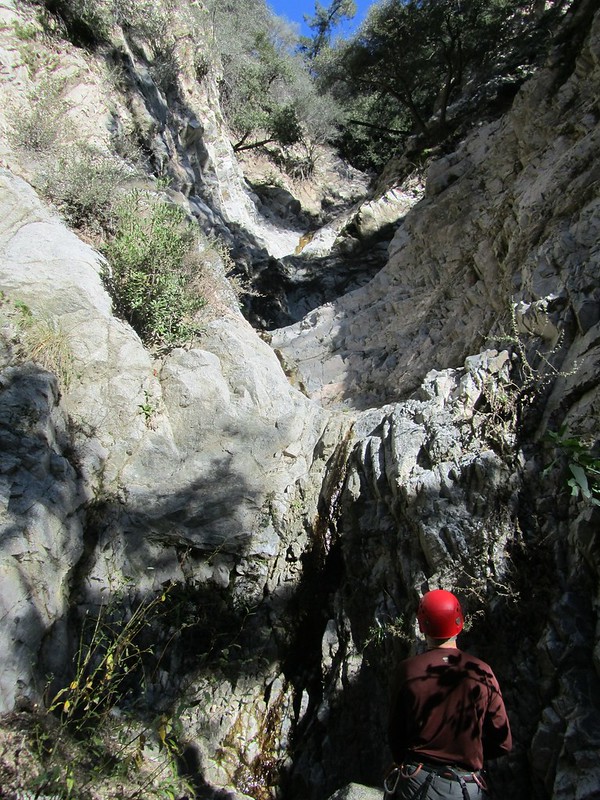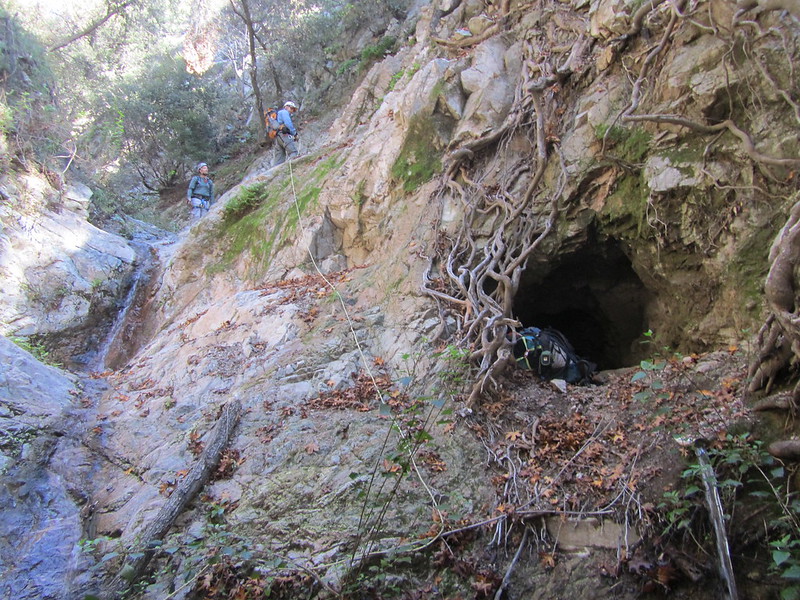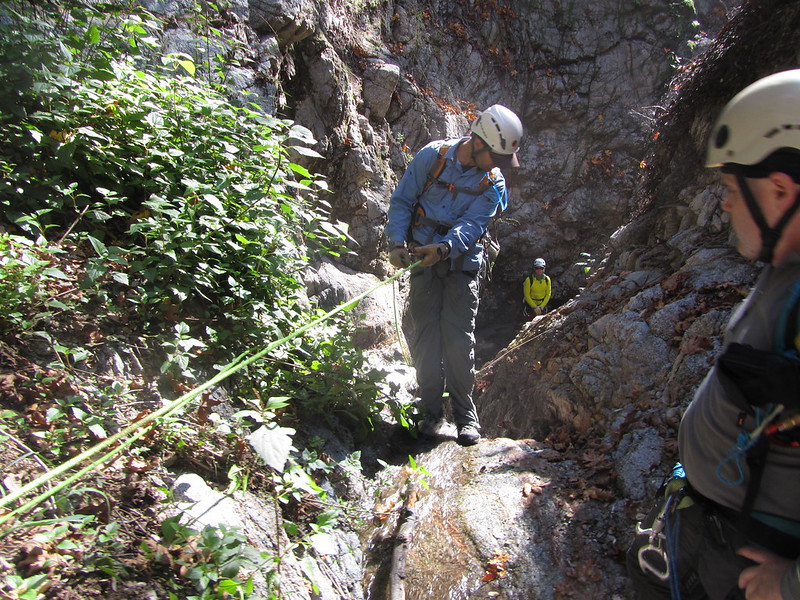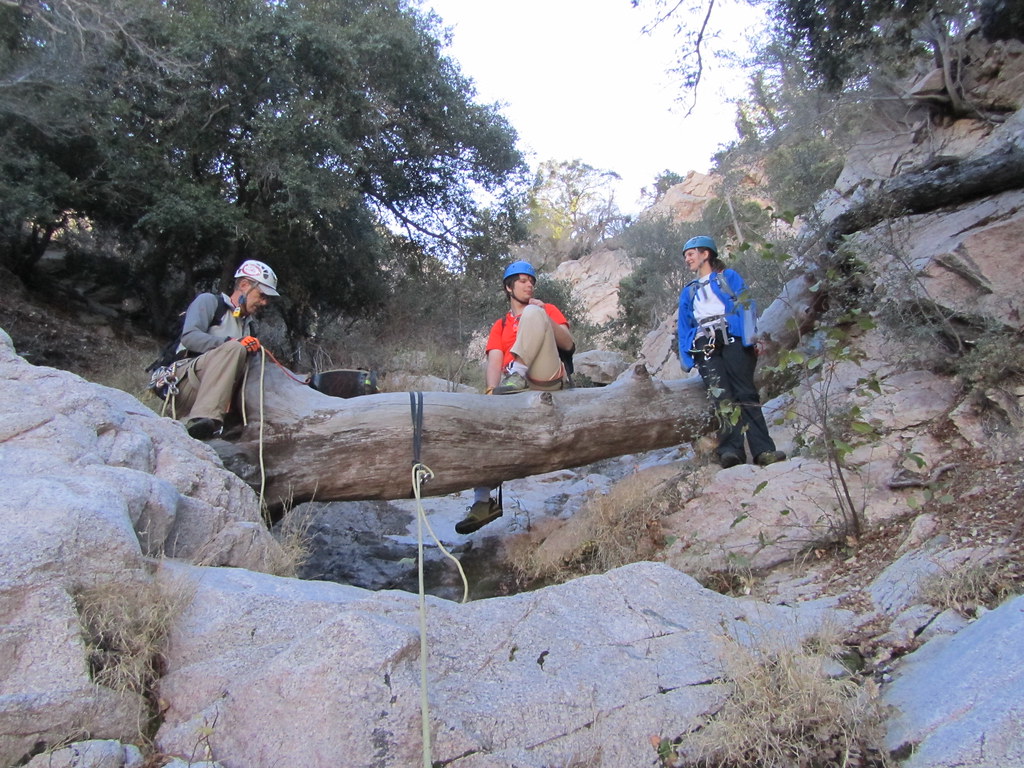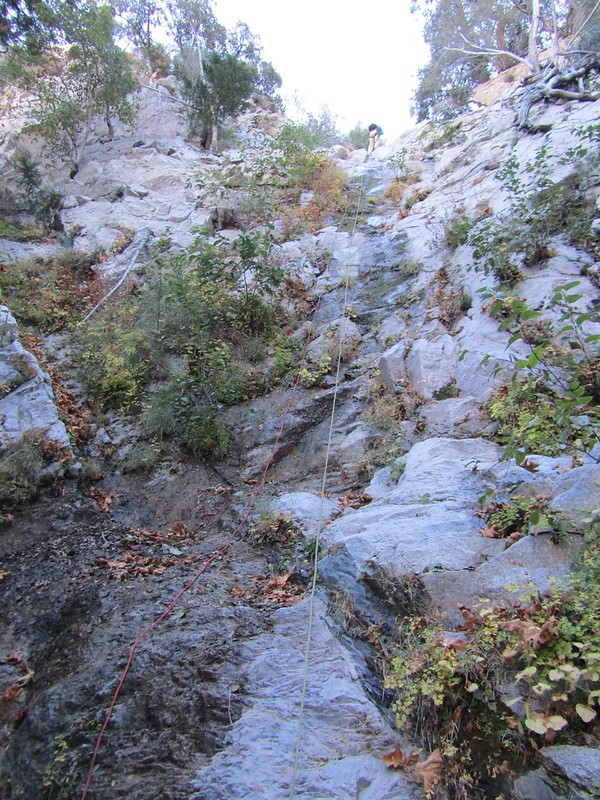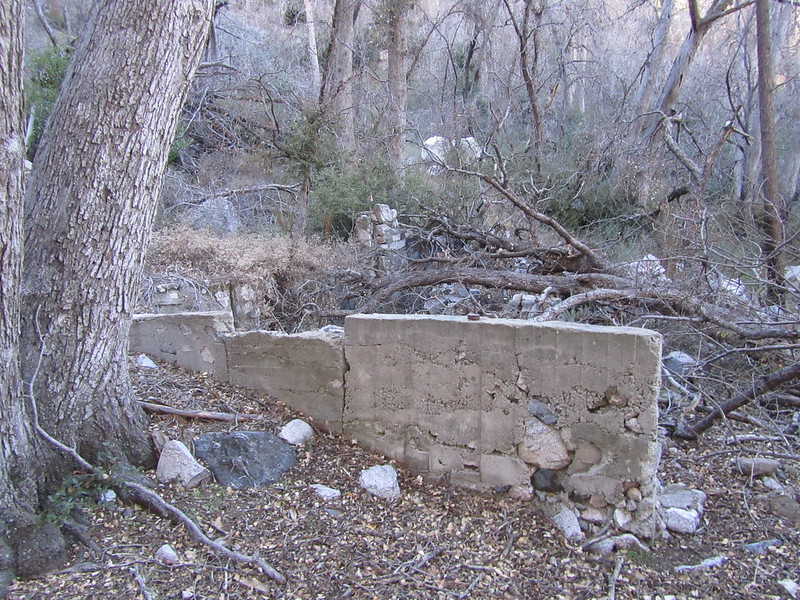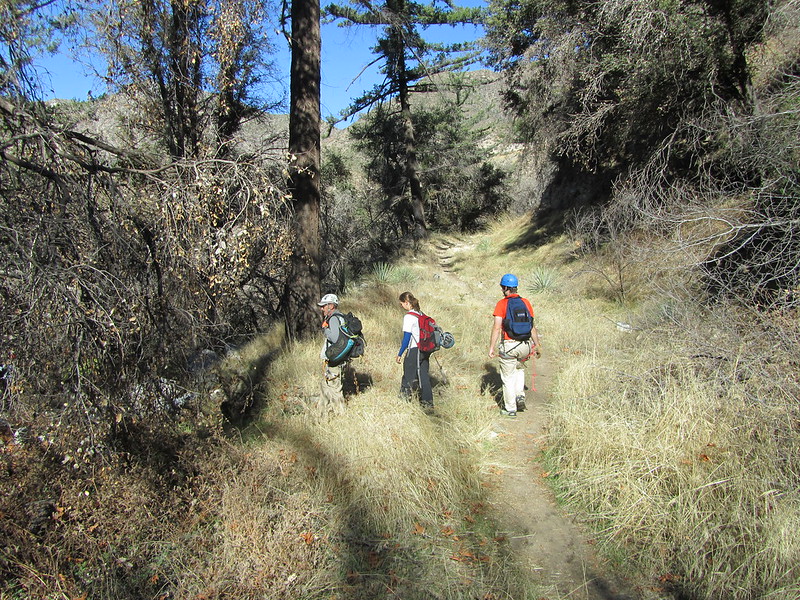A view of La Canada/Flintridge from the Mount Lukins fire road
When we made it over to the drop-in point we found that the other group had beaten us there by a good ten minutes. The fire road is the route to take. When we finished the canyon these guys would be able to hop in their cars and drive away, while someone from my group would have to drive me back to my truck parked on the side of the highway twenty minutes away. The shuttle is just a waste of time and gas.
Dropping into the canyon
We geared up and dropped into Hall Beckley. The first thirty minutes are a steep decent down a use trail. The first rappel was a short one anchored with some webbing that should probably be replaced soon.
The first rappel
The next few rappels and down-climbs were pretty straight forward. There was webbing already in place at all the raps. Some of the webbing looked a little sun bleached and might need replacing soon. The biggest rappel in the canyon is 140ft with five ledges before you get to the bottom.
The large multi-step rappel
After the next rappel there is a cave on the the left hand side of the canyon. I only crawled in about 10, but it goes back about 75ft before it's closed off by a man made wall. After the cave the battle to keep my shoes dry became futile. We started to see a lot of piping and cable that has been long forgotten by the water company.
Steel cable ladder
Brennen has eight rappels listed in his guide, but we had to rap eleven times. The wire cables he describes as being down-climbable are no longer viable. After we climbed down a couple of debris dams it was a short walk to the quiet neighborhood that we had met at in the morning.
The first and bigger of two debris dams
One of the members of our group, Jason, runs a neat canyoneering resource called uCanyon. The site has all kinds of canyoneering information. One thing Jason does is make these awesome illustrations of canyons with all the information you need. Here's the one he made for Hall Beckley:


